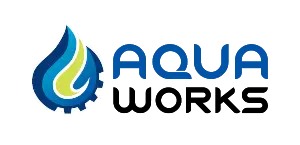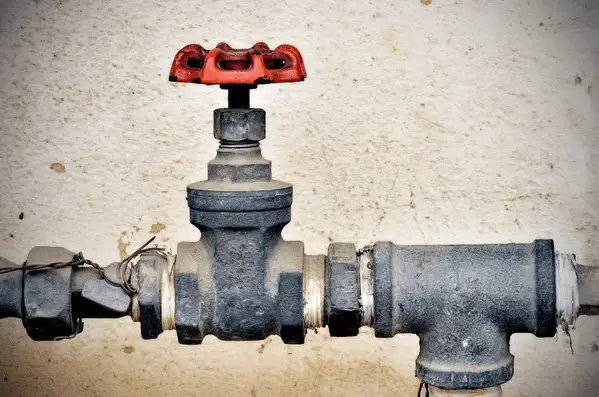Dangers of Lead in Drinking Water
Drinking and Ingestion of lead in drinking water inhibits blood formation, damages the kidneys and can lead to infertility and gastrointestinal problems. Lead is also considered carcinogenic and damages the nervous system. Even small amounts of lead are problematic for babies and children.
Read more >>>
Lead in NZ drinking water – Otago region under investigation
Two coastal towns in Otago hit the headlines in early 2021 as a dangerous amount of lead was found in their drinking water. At first, the authorities assumed it was a local problem (outdated pipes). However, in February, it turned out that the issue already existed in their water reservoir¹. The maximum acceptable level for lead in drinking water is ten micrograms per litre. In this case, the level was forty times higher! Consequently, there was an acute danger to the health of residents in both communities².
What is the danger of lead in drinking water?
Lead is a toxic heavy metal for humans. Consuming tap water containing lead over a long period can lead to chronic poisoning. The symptoms are not immediately noticeable. However, even traces can lead to impaired blood formation, kidney and nervous system function. Lead poisoning can cause high blood pressure and an increased risk of cardiovascular death in adults. The heavy metal accumulates in the organism and is deposited to 90 per cent in the bones.
Particularly at risk of lead poisoning are unborn children, infants and pregnant women.
Lead has an embryotoxic effect, i.e. it is toxic to the unborn child and impairs intelligence development in infants and young children4. Even a relatively low lead concentration of 10-25 µg/l in drinking water could impair blood formation and intelligence development in unborn babies, infants, and young children. In addition, the serious health threat of the heavy metal lead for this risk group are delays in physical development, damage to the development of the child’s nervous system and even behavioural disorders.
How does lead get into NZ drinking water?
In the past, lead was increasingly used in the construction industry for water pipes, faucets, and plumbing fixtures. The heavy metal gets in your drinking water when these pipes start to corrode over time. Water with high acidity or low mineral content is particularly corrosive to fittings and pipes. In New Zealand, this would affect nearly any rural home that collects rainwater, where the pH of rainwater is typically around 6.5.
Many homes in New Zealand built before 1986 still have copper pipes connected with lead-based welding solder, plumbing fixtures and other pipe fittings³. Nowadays, most water pipes are predominantly made of copper, stainless steel or plastic and therefore no longer pose a risk from lead poisoning in drinking water. But even in newly built houses, the water pipes leading to your house can bring lead-contaminated drinking water into your home. These water pipes, which connect the municipal water plants with households and businesses, can still contain lead components so that when you open the tap, the toxic lead can be in your drinking water unnoticed.
Master Plumbers of whom we are members, have been advocating for a number of years for a reduction or elimination of taps/faucets sold with any lead content and the same goes for brass fittings. “No level of lead is acceptable,” says Master Plumbers CEO Greg Wallace. “Other countries, including Australia, are moving to lead-free tap ware and brass fittings, and New Zealand should be following suit.
How do we remove lead from NZ drinking water?
The Centers for Disease Control and Prevention (CDC) recommends replacing the lead source, such as a corroded pipe or leaded fittings in your rainwater system, as soon as possible. As this process could take a long time, installing water filters helps in the short term, reducing harmful contaminants such as lead from the water supply.
Various filtering methods can be used to eliminate harmful lead molecules from tap water directly at the point of use (POU): For example, reverse osmosis, which filters foreign substances out of drinking water through a fine-pored membrane. This is a purely physical process that does not require any chemicals that could unnecessarily pollute the water. Suppose the lead is getting into your water from the town distribution pipes on the way to your house. In that case, you need a point-of-entry (POE) system to filter the harmful heavy metal out of your drinking water.
The way forward to remove harmful lead from New Zealand’s drinking water
Currently, the Ministry of Health manages the Drinking Water Standards for New Zealand 2005 (Revised 2018). To assist local drinking water suppliers in complying with these Standards and the Health Act 19561, the Ministry of Health publishes guidelines. These directives should contribute to identify and administer risks associated with drinking water in New Zealand.
From probably late-2021, the responsibility for New Zealand’s drinking water regulation will be handed over to the recently established national water regulator, Taumata Arowai. It will be accompanied by a new Water Services Act to strengthen the regulatory framework for drinking water in New Zealand. With this new bill, Taumata Arowai will have the authority to make essential changes to the drinking water standards and establish new compliance rules for drinking water suppliers.
Get an NSF certified carbon filter for lead-free drinking water
Aqua Works offer NSF-certified carbon filters. They primarily reduce the lead content in your drinking water and keep it safe for your family. Please get proper advice on what filters you should use, as the filter must be suitable for the conditions in your household. It is also essential to change these filters at the intervals recommended by the manufacturer. Most of these filters absorb heavy metals. When they are at 100% capacity, they can release toxins back into the water at higher concentrations than the original. Working with a company like Aqua Works, which has an actively managed database, is essential. Our expert team advise you when your system requires a service. Additionally, our records will show us the correct type of filter to replace. We take care of this so you don’t have to, and it’s one less thing for you to remember.
Which is the right filter to reduce lead in your drinking water?
Different types of filters reduce lead from your NZ drinking water.
- Reverse Osmosis filters
- Under Bench lead specific water filters
- Whole house lead specific filters
Since not every water filter is designed to minimise the lead content in your drinking water effectively, we offer professional onsite advice to help you make the best choice for your household.
Call us at 0800 278 288 to book a free onsite visit today.
References
1 Anan Zaki (2021). Water in two tiny NZ towns has toxic levels of lead. Locals weren’t warned for a month because staffer was on holiday. NZ Herald online. Retrieved 2.5.2021 from https://www.nzherald.co.nz/nz/water-in-two-tiny-nz-towns-has-toxic-levels-of-lead-locals-werent-warned-for-a-month-because-staffer-was-on-holiday/4JZAK6BKNJJGXLINNM2ZYCVK34/
2 Uwins-England, H. & Jill McKenzie, J. (2021). Final Report. Review of health response into Waikouaiti water supply lead contamination. Retrieved 2.5.2021 from https://www.health.govt.nz/system/files/documents/publications/final-report-health-response-into-waikouaiti-water-supply-lead-contamination31mar2021.pdf
3 ESP Water Products (n.d.). How to remove lead from water. Retrieved 2.5.2021 from https://www.espwaterproducts.com/how-to-remove-lead-from-water/
4 CDC (n.d.). Childhood Lead Poisoning Prevention. Retrieved 2.5.2021 from https://www.cdc.gov/nceh/lead/prevention/sources/water.htm
5 RNZ (2021). New Zealand needs to ban lead in drinking water plumbing – environmental expert. News Hub. Retrieved 2.5.2021 from https://www.newshub.co.nz/home/new-zealand/2021/04/new-zealand-needs-to-ban-lead-in-drinking-water-plumbing-environmental-expert.html

